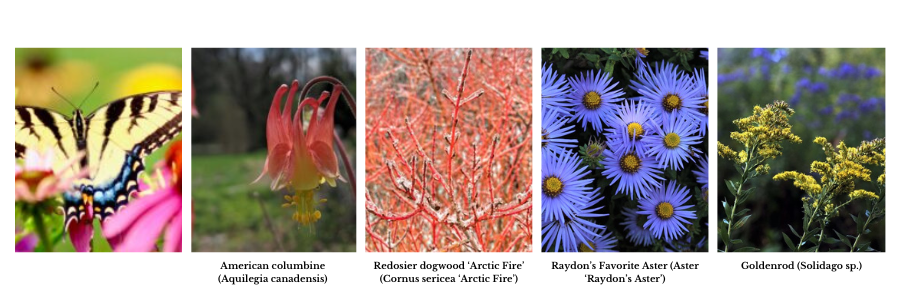Gardening for Pollinators: Step-by-Step Checklist
Our gardens are vital retreats for both people and pollinators, offering a place to relax and a crucial habitat for wildlife like bees, butterflies, and hummingbirds. As natural habitats decline, gardens become increasingly important for pollinator survival.
At Tyler Arboretum, we prioritize planting for pollinators and encourage you to do the same at our Plant Sale.
Here’s how:
- Identify Pollinator Plants: We’ve categorized plants that are great for pollinators—native plants, those that attract butterflies, birds, or hummingbirds.
- Use the Pollinator Plant Wishlist: Download and print this list from our website to help plan and shop.
Whether you’re a seasoned gardener or just starting, our simple steps and guidelines will help you create and sustain a thriving pollinator garden, enhancing both wildlife support and garden beauty—a true win-win scenario.
Step 1: Identify Key Pollinator Plants
Categories of Pollinator Plants
- Native Plants: Focus on indigenous species for regional adaptability.
- Attract Butterflies: Choose plants like Golden Alexander.
- Attract Birds: Include berry-producing shrubs and nectar-rich flowers.
- Attract Hummingbirds: Opt for tubular flowers like American columbine.
Tools for Planning
- Pollinator Plant Wishlist: Download and print this list to organize your shopping effectively.
Step 2: Plan for Multiple Seasons of Blooms
Seasonal Plant Selection
- Spring: Plant American columbine and Golden Alexander for early pollinators.
- Summer: Include Beard-tongue and Mountain mint to attract bees and butterflies.
- Fall: Opt for Aster ‘Raydon’s Favorite’ and Wrinkle-leaved goldenrod for late-season nectar.
Design Considerations
- Ensure a continuous supply of blooms from spring through fall to support pollinator food needs.
Step 3: Plant a Variety of Colors, Shapes, and Sizes
Color Diversity
- Incorporate a spectrum of colors as different pollinators are attracted to different hues.
- Example plants: Mountain mint (varied pollinators), Bee-balm (hummingbirds).
Flower Shape
- Choose plants with different floral structures to accommodate various pollinator species.
- Tubular flowers for hummingbirds; flat-topped flowers for bees and butterflies.
Vertical Layering
- Use a mix of tall, medium, and short plants to enhance the three-dimensional appeal of your garden.
Aesthetic and Functional Benefits
- A diverse garden design enhances visual interest and supports a broader range of pollinators.
Step 4: Adopt a Minimal-Cutback Approach for Winter
Winter Shelter for Pollinators
- Leave dried stems and leaf litter to provide winter habitats for native pollinators.
Plant Selection for Structure
- Choose plants that remain upright in winter, providing both aesthetic value and habitat.
- Examples: Moss phlox for ground cover and Redosier dogwood for striking winter color.
Additional Tips
- Consider the garden’s appearance in all seasons, ensuring it remains attractive while functional.
Additional Tips for Success
- Begin with easy-to-maintain plants if you’re a beginner.
- Follow the Pollinator Preserve guidelines available at Tyler Arboretum for best practices.
Final Note
- Regularly revisit and adjust your garden plan to better cater to both pollinators and your personal aesthetic preferences.
- Remember, your garden can be a dynamic space that evolves with your interests and the needs of the local wildlife.
This checklist will help ensure your garden not only thrives as a beautiful landscape but also serves as a vital refuge for pollinators throughout the year. Enjoy the process of creating a sanctuary that celebrates and supports biodiversity!


